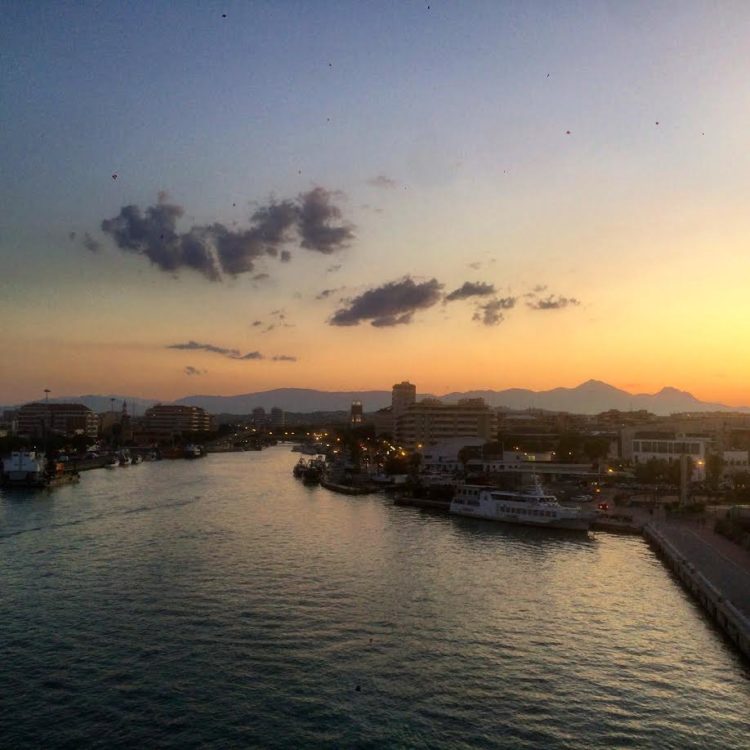Il lungofiume ciclabile
Lunghezza
3,5 Km
Difficoltà
Facile, pianeggiante
Fondo
Ciclabile asfaltata
Google Maps
https://bit.ly/2KvRohI
Questo itinerario si interseca con altri come La Pedalata nel Pineto con il quale condivide il Ponte del Mare e In bici fra murales e aperitivo con una traccia comune. Quella accompagnava alla scoperta dei murales in città passando per il fiume, qui diamo più indicazioni proprio sul corso d’acqua che attraversa e caratterizza la città. La partenza dunque è dal Ponte del Mare per passare sul Ponte Flaiano e proseguire lungo la ciclabile sull’argine, fino all’uscita su via Valle Roveto, all’altezza del Ponte Villa Fabio. Un itinerario di andata e ritorno, immaginando un po’ la (seppur poca e non sempre valorizzata) storia della città.
Il fiume nasce a Capo Pescara a Popoli, nella Riserva naturale regionale Sorgenti del Pescara dove l’acqua proveniente dal grande acquifero di Campo Imperatore, incontrando l’ostacolo offerto dalla roccia impermeabile della Maiella, zampilla a 7000 litri al secondo.
E così l’Aterno-Pescara arriva qui dopo un percorso totale di 145 km. Ed è il fiume l’elemento caratterizzante intorno al quale si è sviluppata la città. Elemento caratterizzante nonché confine naturale di quelle che fino a poco dopo la prima guerra mondiale erano due cittadine diverse: a sud la più antica Pescara (ora Portanuova), cresciuta sui resti della fortezza cinquecentesca che presidiava il fiume. A nord del fiume, nella stretta fascia di terra che si allunga tra le colline e il mare si era invece sviluppata dal 1806, prendendo a fulcro il santuario della Madonna dei Sette Dolori, Castellammare.
E fiume, e mare, intorno ai quali sono nati i borghi dei pescatori. Per immaginare la Pescara che fu, prendiamo in prestito le parole di una viaggiatrice dei primi del ‘900 Anne Macdonell, che pubblica un volume dal titolo “In the Abruzzi”. E siamo nel 1908. Ed ecco la parte dedicata a Pescara e al fiume: “La foce del fiume è costeggiata da verdi pioppi che si agitano al vento e la parte più estrema è delimitata da ombrosi pini mediterranei. E dal mare, o da qualche parte tra il cielo e il mare, giungono le barche, simili a grandi uccelli dalle piume sgargianti di colore cremisi, rossastro, arancione fiammante, giallo chiaro o di vari colori”.
Della celebrazione del fiume sulla facciata del Comune abbiamo già detto in In bici fra murales e aperitivo. Prima di passare sotto il Ponte di Ferro, sulla destra da notare il Circolo Canottieri La Pescara, del 1924 Dopo il passaggio sul Ponte Flaiano, si prosegue sulla ciclabile dell’argine, con sulla sinistra ciò che rimane di fabbriche di laterizi, un esempio della Pescara industriale.
Autore: Alessandro Ricci (1974) giornalista free lance, inizia con “Il Messaggero” Abruzzo nel ’94. Collabora con testate regionali e nazionali, cura l’ufficio stampa per enti pubblici e privati. Cura il progetto Borracce di poesia ® dal 2007.
.
.
.
Cycling along the riverside
Length
3,5 Kms
Difficulty level
Easy, flat
Route
Paved bike path
Google Maps
https://bit.ly/2KvRohI
This itinerary well links with others such as Pedalling in the city-woods with which it shares the view of Ponte del Mare and Murals and aperitif, a perfect urban ride with a common track.
That one was about discovering murals in the city passing by the river, here we give more info about the river that characterizes the city. The starting point is therefore from Ponte del Mare to pass over Flaiano Bridge and continue along the cycle path on the embankment, up to the exit on via Valle Roveto, at the height of Ponte Villa Fabio. A round-trip itinerary, imagining a bit the (albeit little and not always valued) history of the city.
The river pours from Capo Pescara in Popoli – Sorgenti del Pescara regional nature reserve where the water coming from the large aquifer of Campo Imperatore, meeting the obstacle offered by the impermeable rock of the Maiella, wells up to 7000 liters per second.
And so the Aterno-Pescara river arrives to the sea after a total route of 145 kms. And the river is the characterizing element around which the city developed. Characterizing element as well as the natural border of those that until a short time after the First World War were two different towns: to the south the oldest Pescara (now Portanuova), grown on the remains of the sixteenth-century fortress that guarded the river. To the north of the river, in the narrow strip of land that stretches between the hills and the sea, it developed instead from 1806, taking as its fulcrum the sanctuary of the Madonna dei Sette Dolori, Castellammare.
River and sea, around which fishermen’s villages were born. To imagine the Pescara that was, we borrow the words of a traveler from the early 1900s, Anne Macdonell, who published a volume entitled “In the Abruzzi”. It was the year 1908. And here is the part dedicated to Pescara and the river: “The mouth of the river is lined with green poplars that stir in the wind and the most extreme part is bordered by shady Mediterranean pines. And from the sea, or somewhere between the sky and the sea, come the boats, similar to large birds with flamboyant feathers of crimson, reddish, flaming orange, light yellow or various colors ”.
Of the celebration of the river on the facade of the Municipality we have already said in Murals and aperitif, a perfect urban ride. Before passing under the Iron Bridge, on the right just notice Circolo Canottieri La Pescara built in 1924. After passing over Flaiano Bridge, continue on the cycle path of the embankment. On the left what remains of brick factories, an example of once upon a time Industrial Pescara.
Author: Alessandro Ricci (1974) freelance journalist since 1994. He’s contributor to regional and national newspapers, handles the press office for public and private institutions. He has started the Borracce di poesia ® project in 2007.
 “Intervento finanziato con il contributo della Camera di Commercio Chieti Pescara”
“Intervento finanziato con il contributo della Camera di Commercio Chieti Pescara”

